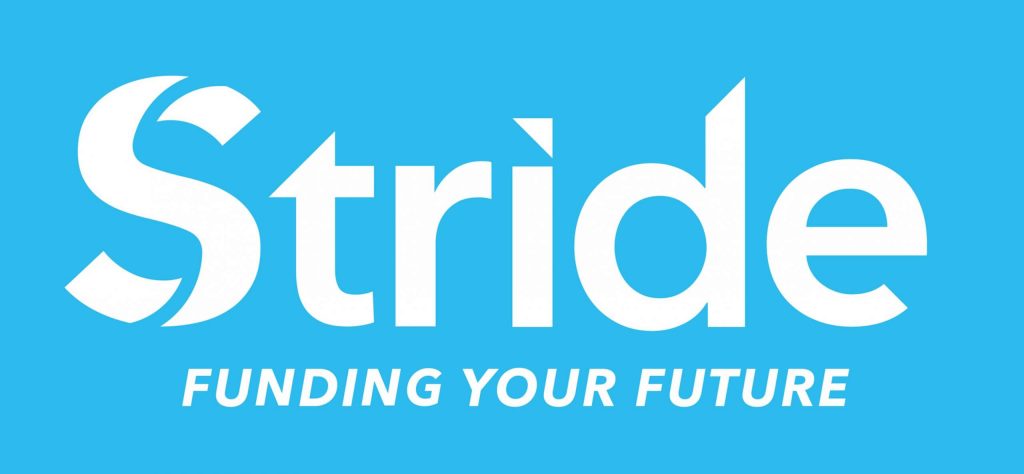Student-centric advice and objective recommendations
Higher education has never been more confusing or expensive. Our goal is to help you navigate the very big decisions related to higher ed with objective information and expert advice. Each piece of content on the site is original, based on extensive research, and reviewed by multiple editors, including a subject matter expert. This ensures that all of our content is up-to-date, useful, accurate, and thorough.
Our reviews and recommendations are based on extensive research, testing, and feedback. We may receive commission from links on our website, but that doesn’t affect our editors’ opinions. Our marketing partners don’t review, approve or endorse our editorial content. It’s accurate to the best of our knowledge when posted. You can find a complete list of our partners here.
Paying for College With a Stride Funding ISA
 By
Brian Geiger
By
Brian Geiger 
Brian Geiger is a co-founder of Scholarships360. He previously worked on the growth team of a hypergrowth startup and in investment banking. Through a combination of private grants, outside scholarships, and income from freelance writing, Brian earned his undergraduate degree from Princeton University with $0 in student debt.
Full BioLearn about our editorial policies

Have you ever thought about using an income share agreement to fund your college education? A Stride Funding ISA might be what you’re looking for.
Stride Funding, founded in 2018, offers a flexible and supportive way to pay for your education with ISAs that may be a better option than taking out student loans. If you’re wondering whether a Stride ISA is right for you, keep reading!
Jump ahead to…
- What is an ISA?
- How does a Stride Funding ISA work?
- Who qualifies for a Stride Funding ISA?
- What makes Stride different?
- Stride ISA vs. Student Loans
- Making your decision, step-by-step
- Final thoughts
What is an ISA?
ISAs are an alternative to student loans that allow students to borrow money to fund their education. The principal difference between the two is that traditional student loans come with a fixed interest rate, while ISAs come with a fixed percentage of your future income.
Students who enroll in an income share agreement agree to pay a small, fixed percentage of their future earned income over a set number of years following graduation– in Stride’s case, that period is five years. So, students who do not land high-paying jobs in the first five years after graduation will end up paying back less than those who do.
An additional factor in most ISAs is that students who are unable to land a job above a certain pay grade will not have to pay anything back at all until they find a more profitable position. This can take some of the pressure off of recent graduates; their repayment requirements will be more tailored to match their financial situation.
How is my ISA rate determined?
ISA providers determine their rate based on the financial track record of the degree you’re pursuing. Students in programs whose graduates typically land high-paying jobs will be offered lower rates, while programs with less lucrative outcomes will breed higher rates.
How does an ISA differ from student loans?
Students who take out an ISA agree to pay a certain percentage of their salary for a set number of years after graduation. On the other hand, if you take out a student loan, you are agreeing to pay back the amount you borrowed, plus a certain amount of monthly interest. Although you may be able to change your monthly payments based on your income, you will not be able to change the principal amount owed.
So, what does this difference mean for you? The main difference is that ISA repayment is generally more forgiving than student loan payments. Student loan borrowers who don’t land a high-paying job often end up lowering their monthly payments in order to afford them. When they do this, the interest adds up and they end up paying back more overall. On the other hand, ISA borrowers will automatically end up with lower monthly payments and end up paying back less overall.
You should also note that this can work against your favor as well. ISA holders who land a high-paying job may end up paying back more than they would if they had taken out student loans. Since an ISA takes a fixed percentage of your salary, the more you earn, the more you pay.
How does a Stride Funding ISA work?
How much can you take out?
Stride allows students to take out a maximum of $25,000 per academic year. You also have the option of taking out an amount smaller than this, and combining it with student loans.
Don’t miss: How much student loan debt is too much?
How long do you have to make ISA payments?
When you graduate, you’ll enter a three-month grace period with no repayments. After this period, you’ll enter your five-year repayment period. If you enter periods of unemployment or underemployment during this time during which you are not making payments, these months will not count towards your five years. So, you’ll have to end up with 60 months of repayments on the books.
What percentage of my income will I have to repay?
Stride’s ISA rates vary based on a variety of factors. These include the school you’re attending and the major you’ve chosen. They typically fall somewhere between 2% – 9.5%. You can find out what the rate would be for your program through Stride’s quote tool. Once you find out your rate, you’ll know what percentage of your income you’d be repaying every month during those five years.
Is there a limit to the amount I’ll have to repay?
Let’s imagine that you land a lucrative job after graduation and are earning more than you expected to. While this is a great situation for a number of reasons, it could theoretically lead you to ending up paying back a much higher amount than you borrowed through an ISA.
Luckily, Stride ISA (and many other ISA providers) include a stipulation that prevents this. If you end up paying two times the principal amount borrowed, you will be released from your ISA obligation. So, if you borrow $50,000 and land a high-paying job that ends up paying Stride $100,000, you won’t have to repay any more. This is called
What income qualifies for suspended payments?
Graduates who are not earning a high salary will qualify for suspended payments without any penalties. Stride mandates that anyone making under $40,000 per year, or $3,333 is exempt from payments. They call this their “minimum income threshold.”
Keep in mind that these periods of suspended payments do not count towards your five-year repayment period. Though you will not be penalized for them, they also do not get you any closer to fulfilling your end of the contract.
Compare and contrast: How to defer your student loans
Will my credit score qualify me for a Stride ISA?
Stride does look at credit scores when considering applications for an ISA. However, because they are in the business of loaning to students, they are used to dealing with applicants with a limited credit history. Unless you have outstanding problems on your credit score, there is a good chance you’ll be approved.
Also see: Credit Karma review
Additional resources
In addition to financing, students will receive career support and other membership benefits through Stride. After all, the more money you make, the more money Stride makes! This might include career scouting resources, networking tools, and preparation for interviews and more.
Who qualifies for a Stride Funding ISA?
Stride ISAs are focused on students who are close to graduating in a select group of majors. Eligible undergraduate students include:
- Junior & Senior Bachelor students in Engineering majors, Computer Science, STEM, and nursing
- Nursing can include RN/BSN, Bachelor (Juniors & Seniors), 2nd Bachelor
And Graduate/Masters students focused in:
- STEM: Mechanical Engineering, Information Technology (IT), Industrial Engineering, Computer Science, Civil Engineering, Chemistry, Biomedical, Biostatistics, Biomedical Engineering, Biomedical Sciences, Biology, Data Science
- Healthcare: Physician Assistant, Physical Therapy, Healthcare Administration, Occupational Therapy, Pharmacy, Health Informatics, Medical Dosimetry, Nursing (RN/BSN/MSN/DNP – Graduate or 2nd Bachelor)
- Business: Masters of Accounting, Masters of Finance, MBA
What makes Stride different?
Stride has a slightly different model than most other ISA providers. In the burgeoning field of ISAs, most opportunities are available on a school-by-school basis. Each school either offers their own ISA or has partnered with an organization to offer one. Stride, on the other hand, offers ISAs to students at many different schools.
Stride’s expansive scope might help the effectiveness of its job placement and career assistance services; since they offer ISAs to students across the country, they probably have a larger network of connections.
Stride Funding ISA vs. student loans
So should you sign up for a Stride ISA, or take out student loans?
The quick answer: it depends.
There are a variety of factors that you should base your decision on. These include:
- The principal repayment amount
- Flexibility of your repayment schedule
- Your credit history
- Whether you have a cosigner
Here are some pros and cons of Stride ISAs:
Pros
- Shorter duration (~5 years) vs. traditional loan (10+ years)
- The payment cap is 2x the borrowed amount
- No accruing interest or interest payments are owed
- Grace period and automatic deferral for periods where you are unemployed and/or make less than the minimum income threshold ($30-40k depending on the program)
- No co-signer required
- No hidden fees (which you may find on some private student loans)
Cons
- The more you earn, the more you’ll repay
- Not eligible for student loan forgiveness
- Not widely available outside of select majors and programs
- Stride offers no discounts for paying your ISA back early
Making your decision, step-by-step
1. Get a quote from Stride
Your first step in making a decision should be to find out what percentage Stride would take from your paychecks during that repayment period. This will help you estimate how much you’d end up paying back under their program.
2. Research some typical salaries in your career field and expected location
Once you have your rate from Stride, you can embark on a mock job-hunt. Look up some entry-level positions in your field of interest and take an average of their annual salaries. Remember, the Stride repayment period is five years, so you may also want to find some mid-level positions to estimate your salary for those last two or three years.
It’s also important to note the location of the positions you’re looking at. Jobs in New York City will typically pay significantly more than their counterparts in South Dakota. This could make a big difference in your decision between ISAs and student loans; that increased salary in New York might increase your total ISA repayment by a lot.
Also see: What is the average starting salary out of college?
3. Research student loan opportunities
Before deciding on an ISA, you should find out everything about your alternatives. Try investigating your student loan options – these include federal loans, such as Stafford loans for undergraduates, and private loans.
As you look at these options, you’ll want to pay attention to interest rates, repayment periods, and repayment flexibility. And when it comes to private loans, make sure to check your credit score to see whether you qualify, or if you’ll need a cosigner.
4. Compare total repayment sums
One of the most important factors in deciding whether to take out a Stride ISA vs. a student loan is to compare the total amount you’ll repay. So, you can start by multiplying your quoted Stride ISA rate by your projected average salary over those first five years. The next step would be to look at the projected total repayment on your loans. This repayment will be determined by your principal loan, interest rates, and fees. If there is a big difference, this could be the deciding factor.
5. Consider how important flexibility is to you
Do you feel confident that you’ll land a high-paying job right out of school? If not, a Stride ISA could be a great option to alleviate some stress. But keep in mind, you will end up paying back more money the higher your salary is. So, if you feel confident that you will land that high-paying job, a student loan might be your best bet.
Final thoughts
Stride is bringing the ISA model to a wider audience than it has seen in the past. It’s an exciting way to finance your education and avoids a few of the key pitfalls of student loans. If you qualify for a Stride ISA, or an ISA of any type, it’s worth considering as an alternative to traditional loans.
While we always recommend winning as many scholarships and financial aid as you can before exploring other options, an ISA through Stride Funding could be a better financial move than taking out private student loans to round out your education financing.



